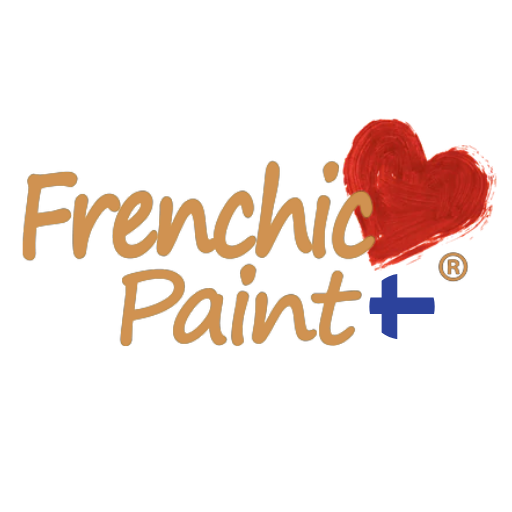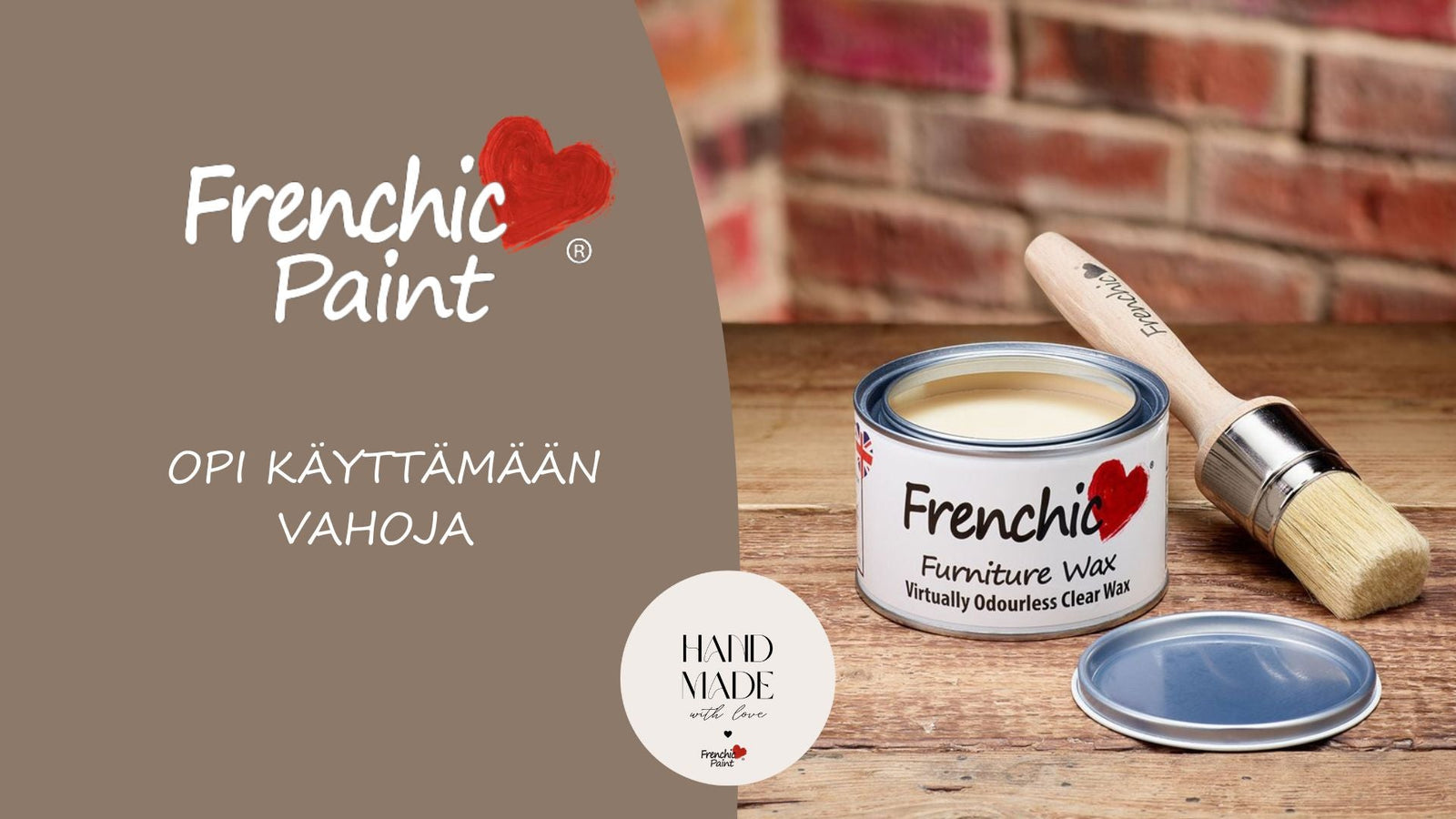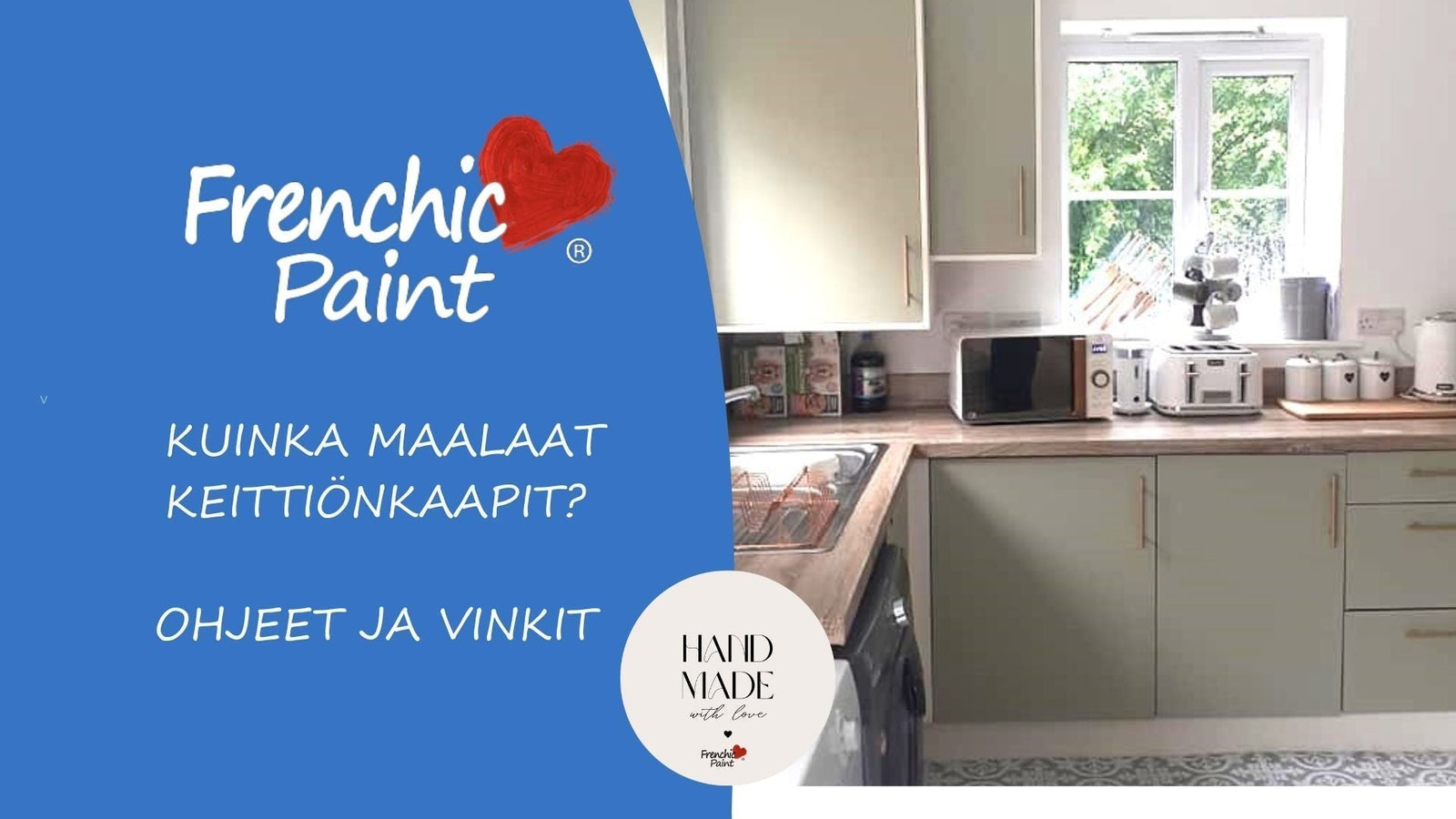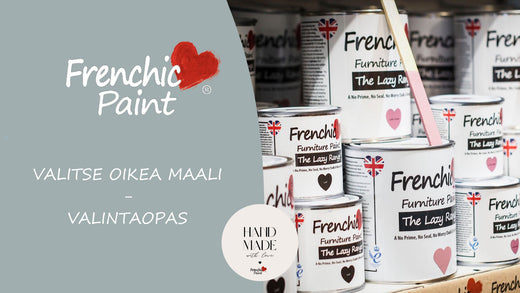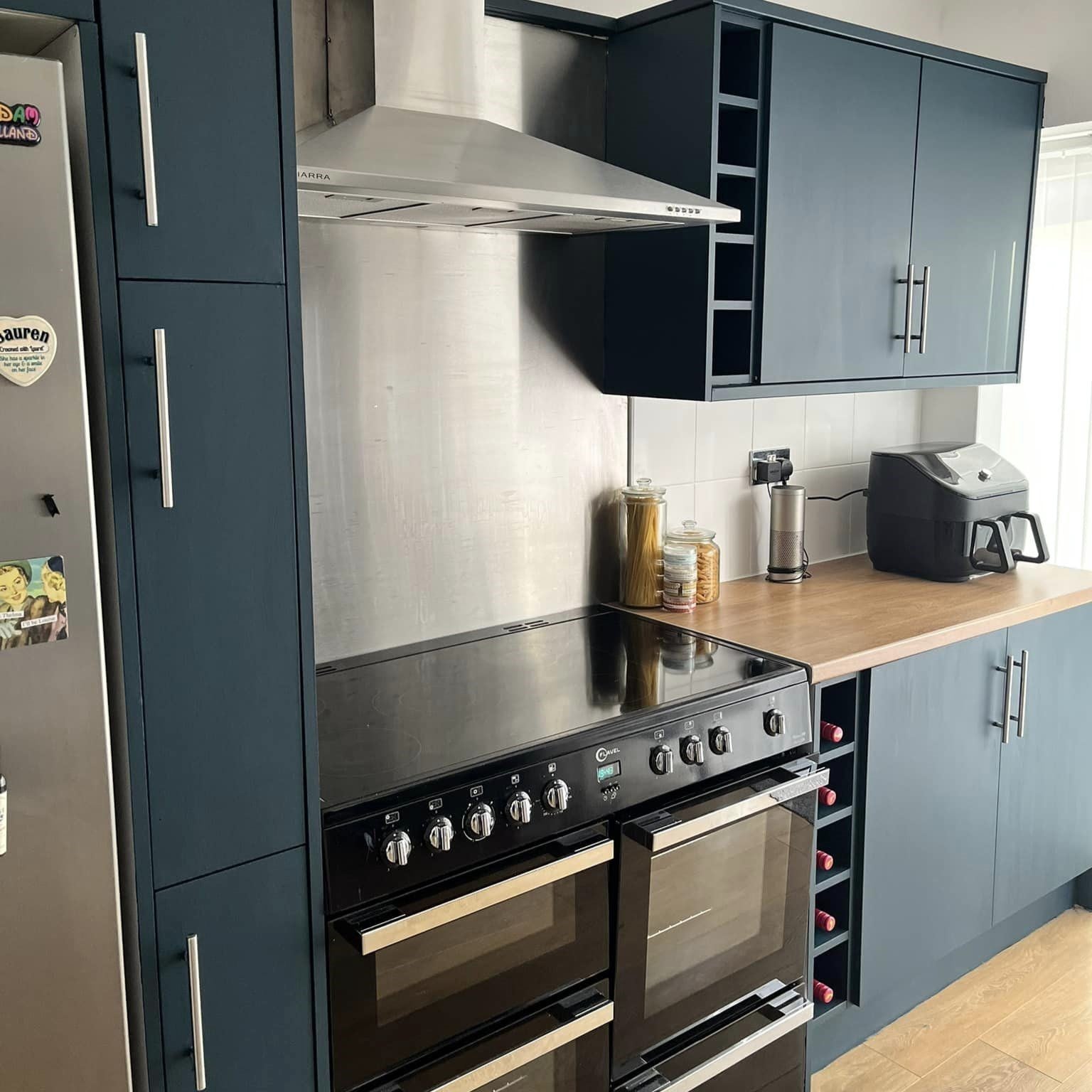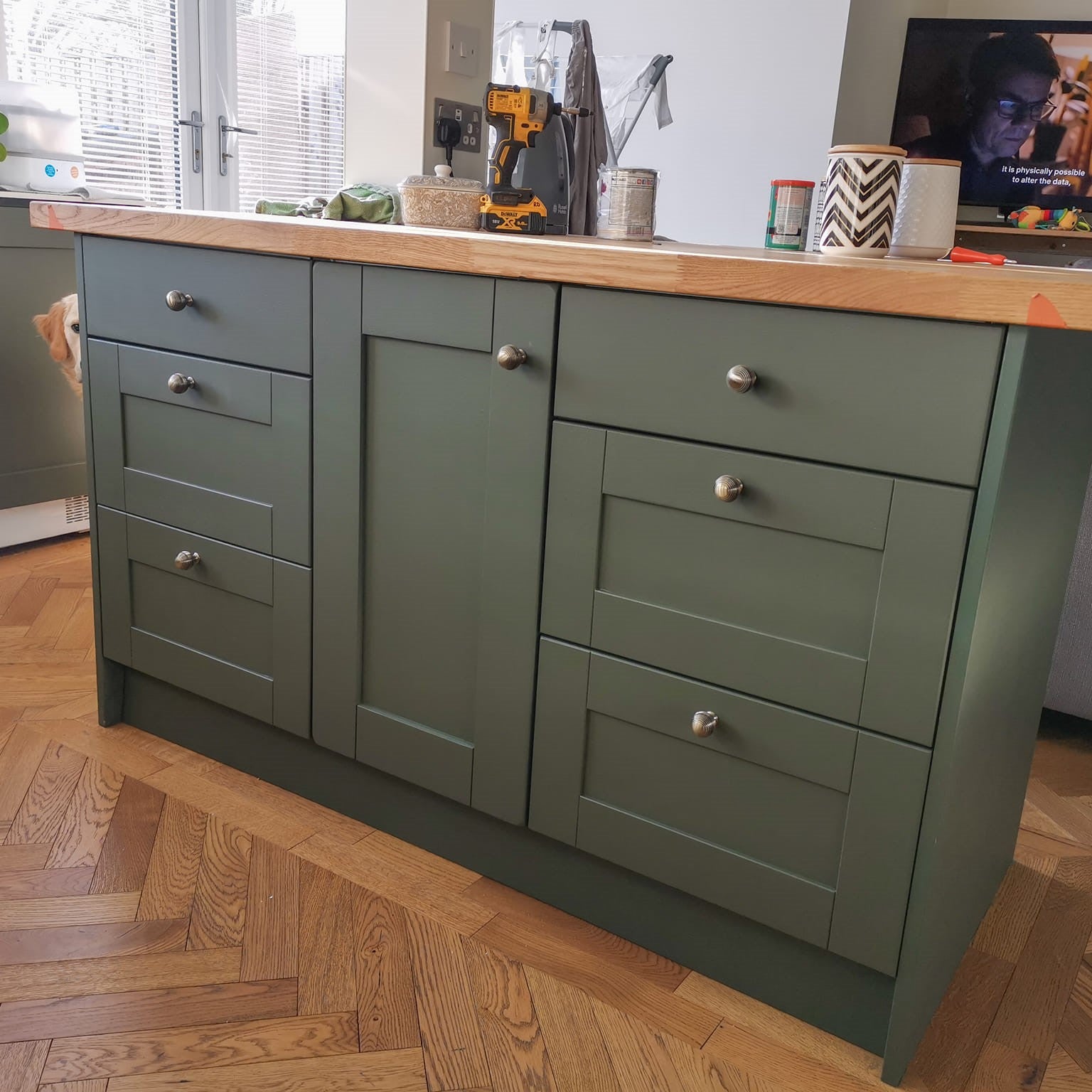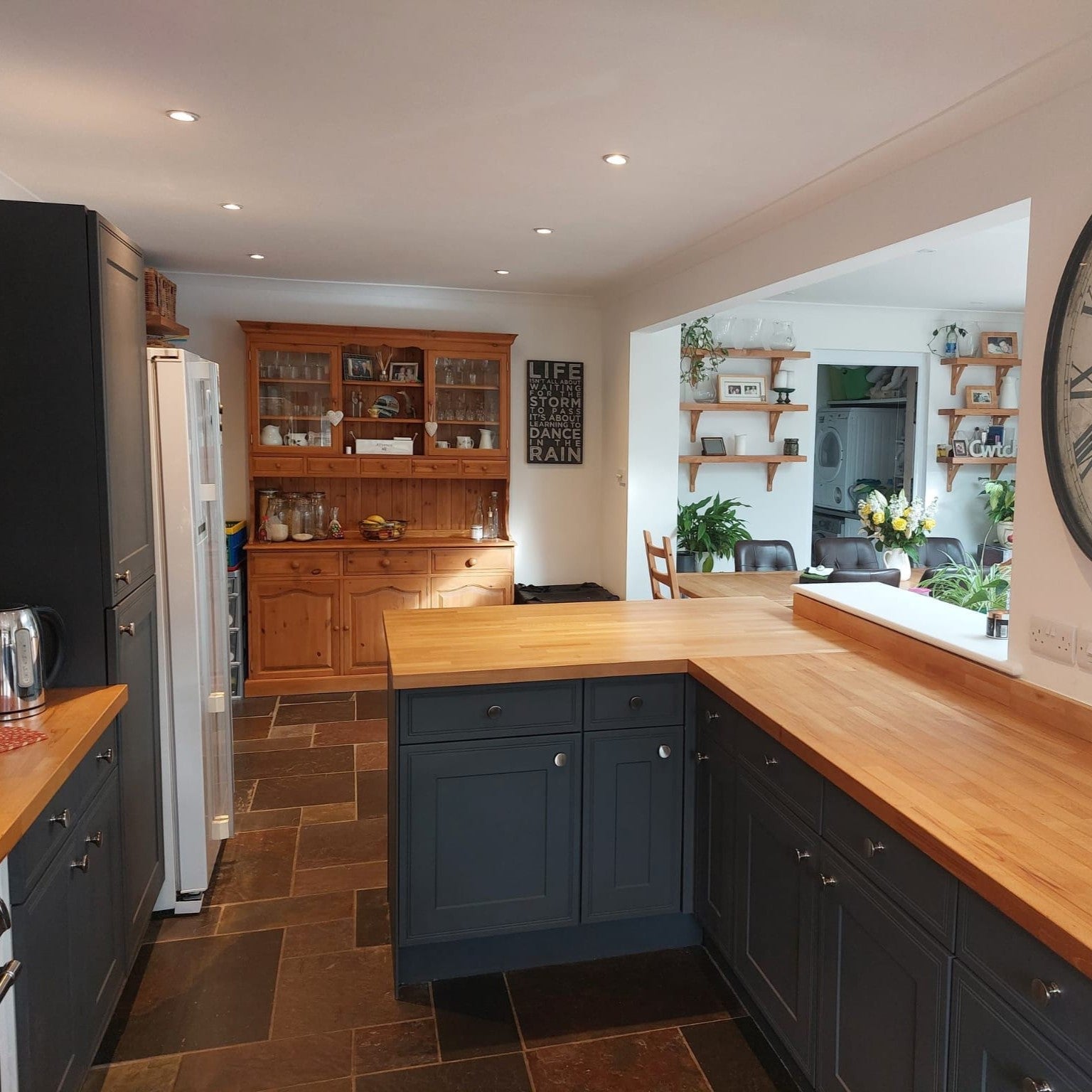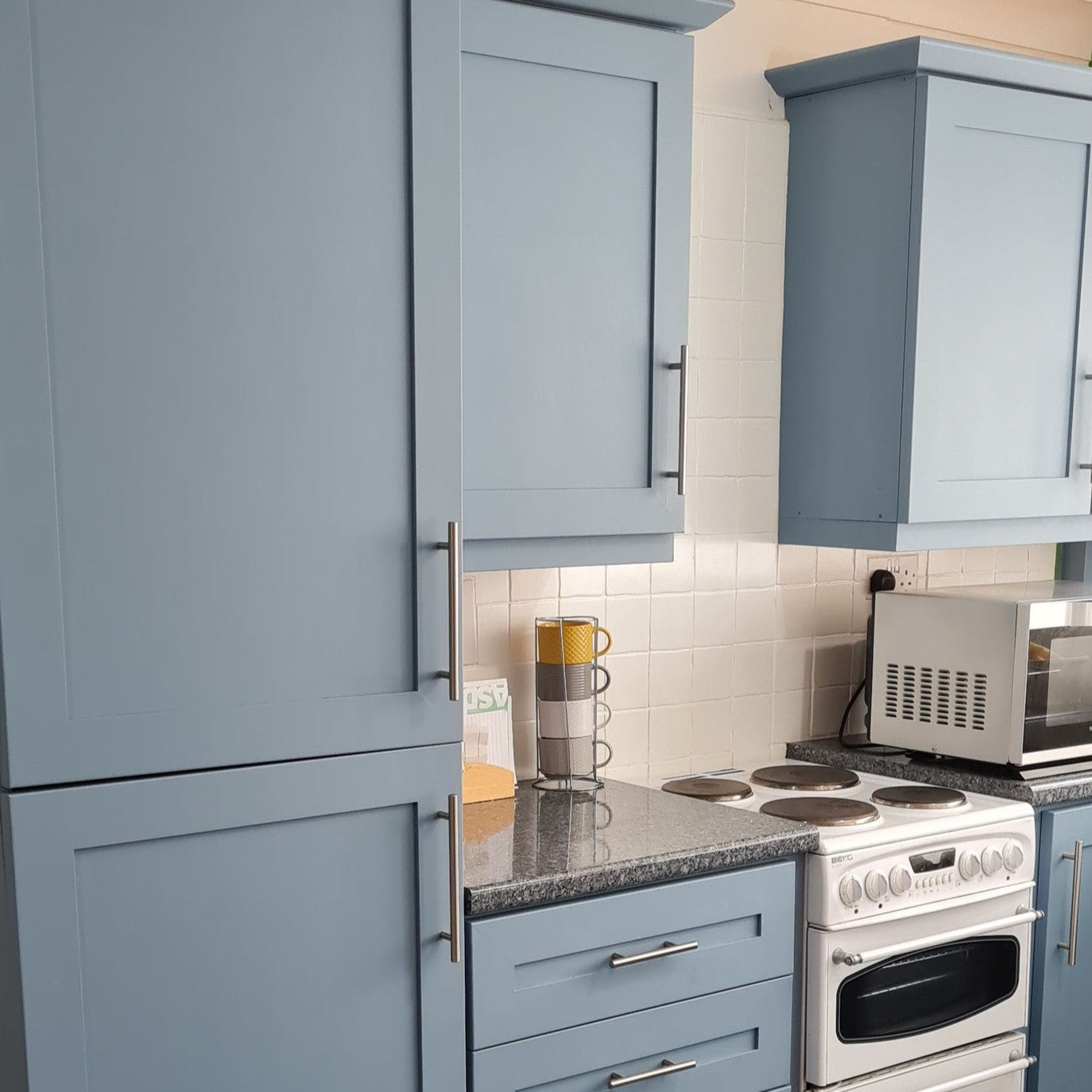Vax är en viktig del av målningen av unika konstmöbler
- För vård av ytor på antika möbler
- Tillsammans med Frensheen metallpigmentpulver
- På ren träyta
Och du kan använda vax med alla färger i Frenchic-serien.
Vax används för att skapa patina och framhäva träytans vackra dekorativa snitt.
Läs de bästa tipsen för mångsidig användning av Frenchic-vax i denna guide
Vi avslöjar också ett proffs tips, en hemlighet, hur du alltid lyckas med vaxanvändning, du lär dig 'Två-vax tekniken' och du lär dig den populära Frenchic vax-hacket för hur man ljusar upp mörka timmerbjälkar och mycket annat användbart!
Med vaxen slutför och skyddar du den vackra målningsytan, men du skapar också fantastiska effekter
Idén och charmen med kalkmålning är att skapa olika lager och använda olika tekniker - det är lätt att förälska sig i användningen av vax! Med vax framhäver du fåror, repor, sprucken färg. Du skapar vackra ljuspartier och på andra ställen djup.
Du kan också använda Frenchic-seriens naturliga vaxer på nya rena träytor samt för att vårda ytor på trä- och antikmöbler.


I denna bild har två olika Frenchic-vaxer använts: brunt och klart. Färger: Apple of My Eye, Al Fresco och Wedding Cake, Lazy Range.
Använd en vaxpensel för vaxningen
Vaxet gnids in i kalkfärgens yta med en roterande rörelse med en särskild vaxpensel. Den roterande rörelsen ger ytan ett vackert naturligt mönster.
På breda, stora ytor framhävs den valda appliceringsmetoden. Om du vill ha en så jämn vaxyta och slutresultat som möjligt, applicera vaxet i träets riktning.
Du kan ta mycket vax på penseln, men överflödigt vax som inte absorberats av kalkfärgen torkas alltid bort med en trasa. Målet är tunna, vackra lager. Vaxet ger en vacker matt yta på den målade ytan. Om du vill kan du polera vaxet med en trasa efter cirka 24 timmars torkning.
Om du väljer Frenchic-seriens vaxade färg från Lazy Range-serien behöver du inte vaxa för att skydda färgytan, men du kan ändå använda vax för att ge patina och skydda slitna partier.
Du kan lägga vax på färgytan bara för dess unika, matta glans.
Tillsätt själv patina och slitage
Chalk Paint / grunderna i kalkmålning handlar om lager och kombination av olika tekniker. Lager på lager gör arbetet intressant och personligt – mer mångdimensionellt än möbler målade med bara en nyans, som vid traditionell möbelmålning.
När du söker inspiration på nätet ser du säkert många vackra, målade möbler med fantastiska toningar och djup i möbelns dörrar, lådor och sidopaneler – ett sådant resultat skapas med flera lager färg och olika vaxer.
Färgade vaxer är ett enkelt sätt att tillföra tredimensionalitet, framhäva kanter och hörn samt ge även nyare möbler ålder, patina och uttrycksfullhet. Med vax framhäver du ytors textur.
När du skapar en sliten yta och slipar upp färgen här och där på din möbel, vaxa hela möbeln till sist. På så sätt skyddar du de uppslitna partierna.

Med bruna vaxer tillsätts vanligtvis en mörk patina och en känsla av djup på kalkfärgen: använd på kanterna av lådor och dörrar för att framhäva områdets tredimensionalitet. Brunt vax mörkar och ändrar färgtonen något. Resultatet blir en rustik och patinerad yta. Prova att blanda i guld- eller grönt Frensheen metallpigmentpulver i vaxet – resultatet blir ett fantastiskt skimrande vax.
Klart vax är grunden till allt. Använd det i två-vax tekniken samt för att skapa nya vaxnyanser. Tillsätt en skvätt färg i det klara vaxet så har du oändligt många vaxnyanser tillgängliga.
Gråa vaxer fungerar fantastiskt över vita och ljusa kalkfärger. Med vaxerna är det lätt att framhäva möbelns dekorativa sniderier, håligheter och fåror. Även grått vax ändrar färgen något, men mindre än brunt. Slutresultatet är stilrent och lätt patinerat.
Vitt vax bryter kalkfärgens nyans vid färgens "topp" och skapar en slöjlik, dimmig ljushet på ytan - ibland får ytan en lite tygaktig textur. Med vitt vax lägger du till vackra "ljusfläckar" på möbeln. Prova vitt Frenchic-vax i Boho-stil för att bleka gulnade rottingmöbler eller korgytor.
Klibbig yta?
Frenchic-vaxerna blir inte klibbiga på ytan - vaxerna i serien är lätta att applicera tunt eftersom deras konsistens är mjuk och lätt att arbeta med. En klibbig yta är ett för tjockt vaxlager.
Hemligheten med att använda färgat vax
Färgade vaxer är inte avsedda att "målas" täckande eller tjockt, utan med lätta lager görs en tunn nyans för att framhäva kanter och fåror. Bästa resultatet får du med flera tunna lager - låt ytorna byggas upp med tålamod och granska ytan från olika vinklar och lite på avstånd under projektets gång.
Hemligheten med tunna lager är att först applicera vax rikligt och sedan torka bort överflödet. Prova så kommer du att märka fördelarna med denna teknik.
Om du skapar slitage på kalkfärgsytan genom att slipa sönder kalkfärgen, vaxa ytan igen efter slipningen, antingen bara på de slitna partierna eller hela den målade ytan. Även färgade vaxer appliceras med vaxpensel och överflödigt vax torkas alltid bort.
Om du vaxar en porös yta; trä eller traditionell chalk paint - hemligheten till ett jämnt slutresultat när du använder färgad vax är två-vax tekniken.
Tvåvaxteknik
Exempel: Vaxning av lådans frontpanel när man vill ha djup och tredimensionalitet
Ytan är målad med traditionell chalk paint, i den naturvita Sugar Puff-nyansen, och avsikten är att göra lådans frontpanel gammal, sliten och patinerad med djupverkan med brunt vax.
- Ett tunt lager klarvax läggs på den torra kalkfärgsytan – torka bort överflödigt
- Applicera brunt vax rikligt över hela lådans yta med vaxpensel
- Torka och tona ut överflödigt brunt vax – börja torka från mitten med en trasa som har klarvax på sig. Lämna mer brunt färg på kanterna och ta bort brunt vax med cirkulära rörelser mest från mitten av lådan med vaxtrasan – mitten blir alltså ljusare än kanterna.
- Torka försiktigt bort överflödigt vax från lådans yta. Eftersom klarvaxet är underst kan du arbeta med det bruna vaxet så länge du vill, och det bruna vaxet tränger inte in ojämnt i ytan. Lägg på med pensel och ta bort med vaxtrasa – upprepa tills du är nöjd.
Klarvax på trasa fungerar som ett suddgummi – när du vill ta bort eller tona ut färgat vax. Denna teknik fungerar bara om du har lagt ett lager klarvax under. – Prova och du kommer att älska vaxerna och deras mångsidighet!
Använder du traditionell kalkfärg men använder inte klarvax under färgat vax?
Då tränger vaxet troligen in ojämnt i den porösa målar- eller träytan och det går inte att rätta till det längre. Resultatet kan se fläckigt, randigt eller på annat sätt ojämnt ut, beroende på vilken teknik vaxet har applicerats med. Klarvax är grunden för all vaxning av traditionella kalkfärger.
Det är alltid bra att ha en burk klarvax i målarförrådet för den flitiga kalkmålare. Prova – du kommer verkligen märka skillnaden i hur lätt vaxet är att arbeta med. Frenchic-seriens vaxer är smidiga och giftfria naturliga vaxer och de är behagliga att arbeta med. Först när du provar märker du hur Frenchic-vaxerna skiljer sig från andra vaxer!
Vaxpensel eller trasa? Båda
Vaxpensel är ett helt överlägset verktyg för vaxning – jämfört med klumpigt och långsamt arbete med trasa.

Överväg att satsa på vaxpenslar, det är bra att ha en egen pensel för varje vaxnyans så att nyanserna inte blandas ihop från smutsiga penslar. Hela möbeln kan inte vaxas med en mjuk målarpensel – för vaxning behövs styva borst som gör att vaxet kan gnuggas in i ytan, dekorationer och fåror enkelt och lätt.
För noggrann vaxning av små detaljer och fåror kan du använda en smalare och mjukare pensel. Vaxning är ett snabbt och trevligt moment i finisharbetet, särskilt när dina verktyg är rätt och det valda möbelvaxet är mjukt att arbeta med. Prova olika verktyg så hittar du det bästa sättet för dig att arbeta och märker skillnaden mellan verktygen.

Att vaxa med bara trasa är mycket arbetsamt och långsamt. Du behöver en luddfri trasa endast för att ta bort överskott av vax.
Tunna lager - 'wax on - wax off'
Vax appliceras rikligt på ytan, gnids in i kalkfärg- eller träytan och överskott torkas alltid bort. Så blir vaxyta jämn och vacker, och torkar också jämnt. Du behöver en luddfri trasa endast för att ta bort överskott av vax.
En roterande rörelse vid applicering av vax hjälper till att få ett naturligt resultat och vaxet når lättare alla sprickor och fåror. Horisontella drag vid applicering kan ge ett 'randigt' resultat, särskilt om du använder mörkt vax utan att först lägga ett lager klart vax – tvåvaxtekniken.
Du kan lägga på flera tunna lager, men låt alltid föregående lager torka 30 min - 1 h innan nästa lager. Extra lager, särskilt med färgade vaxer, framhäver vaxets egen nyans.
Ett för tjockt lager blir lätt klibbigt och känns aldrig torrt – tjocka vaxlager är besvärliga på möbler som används.
Vax kan tas bort med alkohol, t.ex. sprit, och mekaniskt genom skrapning. Om du inte har vaxat tidigare, gör ett litet test först.
Teknikvideor och fler användbara projektbilder finns om vaxer i Frenchic-seriens egen FB-grupp.
Antik eller bar träyta
När man vaxar en bar träyta 'mättas' träet med vax, lager läggs på tills träet inte längre absorberar vax. Vaxningen upprepas regelbundet över tid, vid behov och beroende på slitage – med åren minskar behovet av vaxning.
Olika träslag absorberar vax på olika sätt. Naturliga vaxer, som Frenchic-vax, vårdar träytan och framhäver träets ådring vackert. Antika möbler kan också vårdas genom vaxning, om de tidigare har vaxats.
Möbelmålare och andra hantverkare älskar vaxets vackra, sidenmatta yta på färg eller trä.

Även en ny träyta kan få ett gammalt utseende med hjälp av vax.
Prova hur en ny träyta ser helt gammal ut som timmerstock när den vaxas med grått vax. En vanlig råplanka blir lätt en "gammal ladugårdsväggsbräda" med grått vax. Brunt vax ger däremot ett plankliknande utseende.

Gulnad björk- eller tallyta, möbel eller panelväggar, tak eller dörrar fräschas enkelt upp med vitt vax som lämnar träets ådring vackert synlig. Du kan också vaxa timmerytor, olika paneler, dörrar, lister, nya eller gamla möbler.

Bild: vaxning av gulnad panel med vitt Frenchic-vax.
Mycket populärt Frenchic hack – ljusa upp ytan utan slipning!

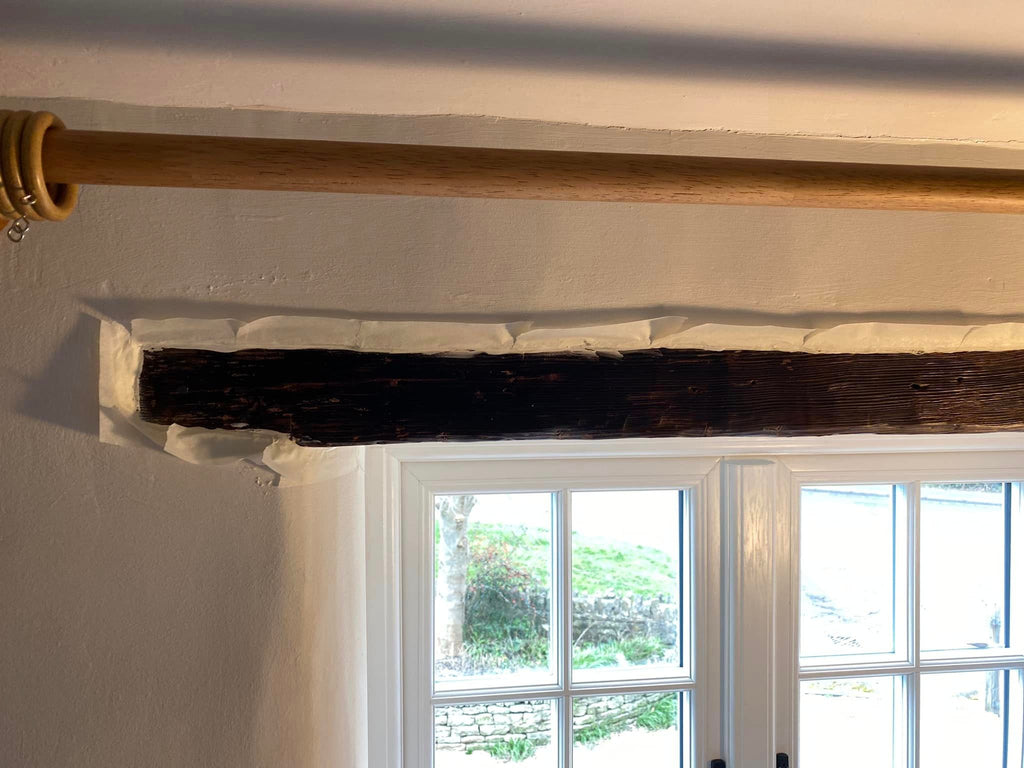



Bild: upplysning av mörk balk: "Creme de la Creme" och brun Frenchic vax.



Var passar vax och var inte?
Vax passar inte utomhus och tål inte ständig avtorkning med rengöringsmedel. Därför rekommenderas inte vax på köksbänkar (köksbord) eller i fuktiga utrymmen som bastun.
När vax appliceras mekaniskt på ytan är det ett lager utöver färglagren. Vax är alltid det sista lagret. Tänk på att det självapplicerade vaxskiktet slits vid användning när du väljer kalkfärg och målningsmetod. Fundera också på vilken typ av slitage ytan eller möbeln kommer att utsättas för och om du är beredd att underhålla den regelbundet.
Till exempel köksbordsskivan; om du vaxar en köksbordsskiva målad med traditionell chalk paint, slits det klara vaxet obemärkt på ställen med stor användning: till exempel vid barnens plats - den delen av bordet torkas ofta av. Lutar någon armbågarna mot bordet på sin plats? Där slits vaxet bort obemärkt och när fett/vätska kommer på de slitna ytorna på bordet, tränger smuts in i kalkfärgen och går inte bort längre.
Köksbordet är en av möblerna som utsätts för hård användning och i varje familj på olika sätt. Det torkas också ofta av och vax löses upp av rengöringsmedel och alkohol. Vax som läggs till kalkfärgsytor på köksbord eller bardiskar är inte det bästa alternativet om du inte är beredd att regelbundet lägga till vax och rengöra ytor endast med milda rengöringsmedel.
En ren träyta som är impregnerad med vax är ett alternativ till köksbänkskivor eftersom vaxet då tränger in i träet och skyddar ytan på djupet. Rengör ytan endast med milda rengöringsmedel och vaxa ytan igen vid behov. Skydda vaxyta alltid från varma kärl med underlägg och kaffekoppsunderlägg.
Istället för vax kan du behandla bänkskivor och bordsskivor med en matt 'Tuff Top Coat', som tål slitage och avtorkning väl och inte slits som vax gör.
Ytbehandla efter slitage
För möbler och ytor med hård användning är det bäst att välja en högkvalitativ kalkfärg där vax redan finns i färgen. Vaxad kalkfärg, Lazy Range, släpper inte igenom smuts när den torkat och dess yta kan torkas av med en fuktig trasa eller milda rengöringsmedel. Vaxet i färgen härdar till en slitstark yta.
Borttagning av vax
Vaxskiktets borttagning kan göras med sprit (alkoholhaltigt rengöringsmedel) eller genom uppvärmning och mekanisk skrapning för att rengöra ytan. Det rekommenderas inte att måla över en vaxyta eftersom vattenbaserade färger stöter bort feta ytor - den nya färgytan kan spricka eller krackelera.
Å andra sidan är målning över vax en målarteknik som ger en gammaldags yta.
Färg som redan innehåller vax är en annan sak än ett separat vaxlager. Över vaxad kalkfärg, Lazy Range-nyanser, kan man måla utan problem.
Välj naturligt vax
Det är bra att känna till några grundläggande saker om vax innan du väljer ett som passar ditt projekt. Det finns flera olika vaxer på marknaden, vissa innehåller lösningsmedel och andra syntetiska eller giftiga ingredienser, vissa vaxer doftar starkt. Andra vaxer är tjocka och styva – de är svåra att arbeta med och applicera tunt, vilket kan göra att slutresultatet inte blir som önskat.
På sidan av vaxburken ser du snabbt om det är en säker produkt, varningssymboler finns på burkens sida om produkten är giftig.
Om du inte tidigare använt vax, välj ett naturligt vax som sprids mjukt för ditt projekt. Till exempel är Frenchic-seriens vaxer naturliga vaxer; de innehåller bivax och carnaubavax (från brasiliansk palm). Det är lätt att bli förtjust i att använda kvalitetsvax och när du har provat förstår du väl vikten av lagerverkan i chalk paint-stil vid möbelmålning.
Frenchic-vaxer baserade på bivax och seriens kvalitetsvaxpenslar passar också för restaureringsprojekt och professionell användning.
Vaxad kalkfärg och vax
Ja, även med vaxad kalkfärg kan och bör man använda möbelvaxer.

Med dem skapar du intressant lagerverkan, tredimensionalitet och samma patina och trädekorationernas framhävning som med traditionell chalk paint – färgade vaxer fulländar dina möbler – skyddsegenskaperna finns redan i den hållbara vaxade kalkfärgen!
Du kan utforska Frenchic-seriens vaxade färger, Lazy Range-serien här och Frenchic-seriens vaxer här.
Ta väl hand om din kvalitetsvaxpensel – vaxpenseln tvättas med varmt vatten och milt rengöringsmedel. Kvalitetspenslar från Frenchic håller i många år även vid hård professionell användning om de sköts ordentligt.
Frenchic-vax är inte självantändliga och är lösningsmedelsfria.
Frenchic-seriens vax har tilldelats det europeiska 'Toy Safe'-certifikatet, så du kan tryggt använda dem även på barnmöbler.
Delta i din orts Frenchic återförsäljares Frenchic-kurser eller titta in i närmaste butik för att fråga om mer vägledning för ditt projekt.
Trevlig målar dag!

